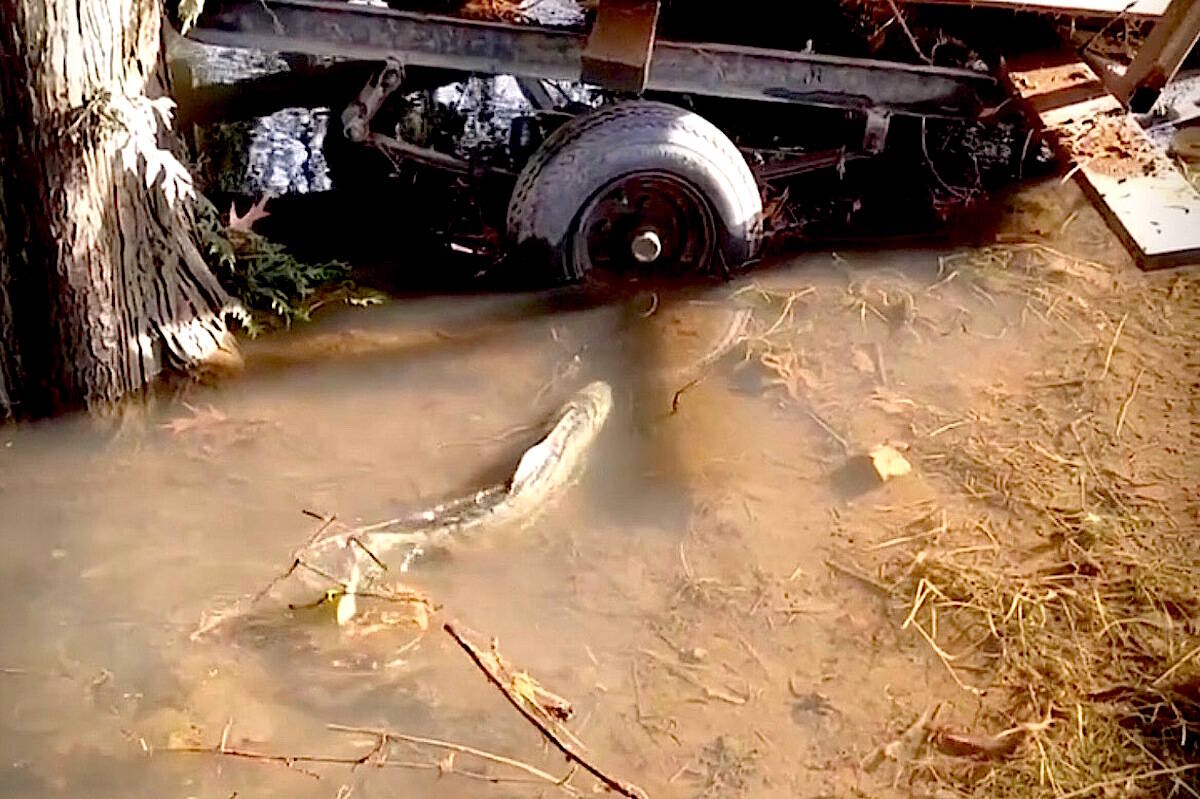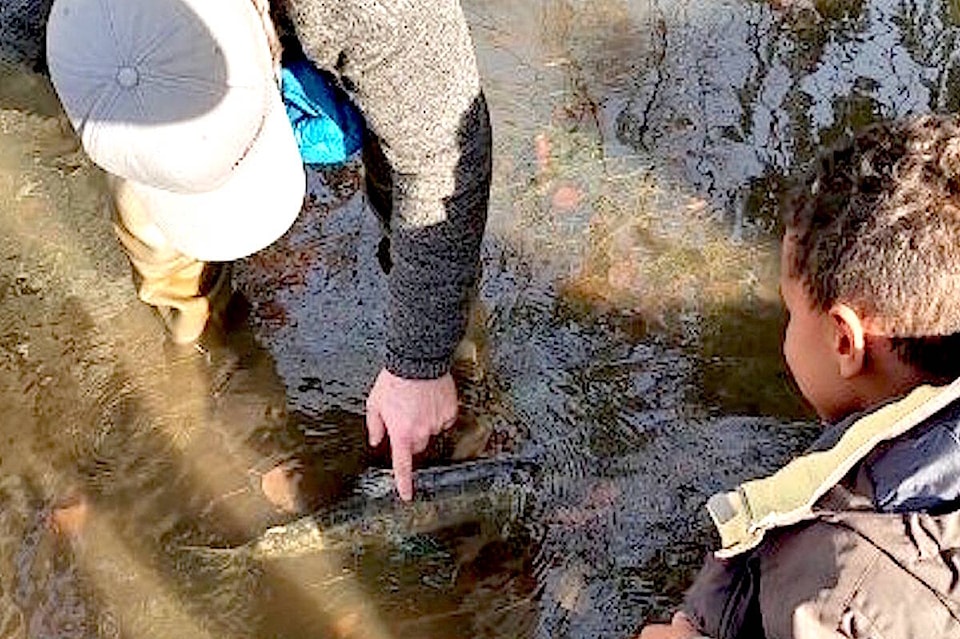B.C. salmon researchers and advocates are starting to consider how catastrophic flooding might impact Fraser River salmon.
Biologist Marvin Rosenau, a fisheries lecturer at B.C. Institute of Technology, said stranded Fraser salmon could end up trapped in flooded areas, coming from the flooded Nooksack River, along Sumas Prairie, or the Chilliwack-Vedder River system.
But it’s the pink salmon, he said, that were likely the hardest hit of all Fraser salmon populations, along with the millions of juveniles and salmon eggs flushed out of the gravel with raging flood waters.
“We just had a fairly significant pink spawning period,” Rosenau said.
Pinks return every other year to the Fraser, and finish spawning at the end of September or early October, making them particularly vulnerable to high flows.
“Pinks spawn in main channel of the Fraser so they would be most heavily impacted,” Rosenau said.
Chum salmon returns were “super low” in 2021, and wrapped up spawning by early November, so many adults would have been lost, along with juveniles in the gravel.
The chum spawn in Fraser side channels in late fall, while coho are right at the peak of spawning now.
“I would have to guess there will be a significant loss, but no one is out there measuring it now,” Rosenau said.
Stranded salmon have been reported swimming in people’s yards, along railway tracks, along trails, and in ditches in the past week.
Roxanna Kooistra, engagement manager for Watershed Watch Salmon Society, said some of the most deadly impacts from recent flooding and landslides might not be obvious right away.
“It’s been devastating to watch the community suffer through such loss in the wake of flooding, including all the deceased animals and the fish,” Kooistra said.
No one knows how many redds washed away due to erosion, or if salmon eggs or juveniles were choked out by the silt.
It may be tough for next generations of salmon to find their spawning beds when they return to the Fraser, as the stream characteristics may have changed.
Lina Azeez, campaign manager with Watershed Watch Salmon Society, agreed the ramifications for salmon aren’t clear yet, but there is already a lot of grief, and unanswered questions bubbling up.
In its Connected Waters campaign, the Watershed Watch Salmon Society, a science-based charity focused on salmon, has been looking at existing flood control infrastructure from the salmon point of view. They’ve been calling on senior levels of government to upgrade flood infrastructure to fish-friendly flood control boxes and gates for a few years.
RELATED:
Flood impacts on salmon have been studied in the past, Azeez said. It’s clear there’s a pressing need to protect spawning habitat in the Lower Fraser to ensure the fish have enough land to tuck into, away from flood waters so they won’t get washed out.
“We have to start asking what does it mean when we say we’ll rebuild the dikes higher, and rebuild the pump station bigger.
“Should we really continue to have intensive agriculture in an area with such a high risk of flooding? It’s time we started having those difficult conversations,” Azeez added.
The problem needs to be reframed.
“Maybe we need a new normal that includes a future for salmon, and better salmon habitat,” Kooistra said.
RELATED:
The only “golden nugget” is the way the community has been stepping up in the face of disaster, she said.
“What’s incredible to watch is people’s commitment to volunteering. It’s people helping people; people helping animals, and caring for fish and the waterways,” Kooistra said.
Anyone who finds a stranded or trapped salmon on their property, or on City of Chilliwack property, can email clegg@chilliwack.com
Do you have something to add to this story, or something else we should report on? Email:
jfeinberg@theprogress.com
Like us on and follow us on .





